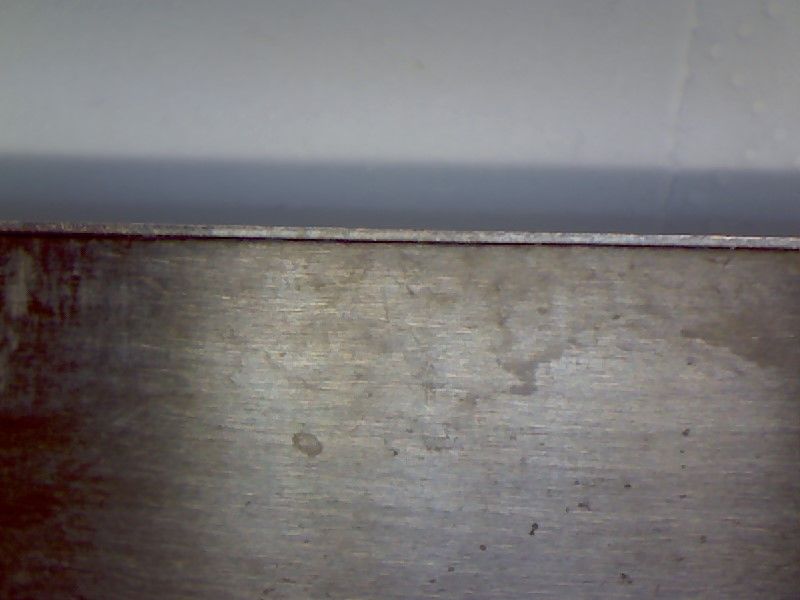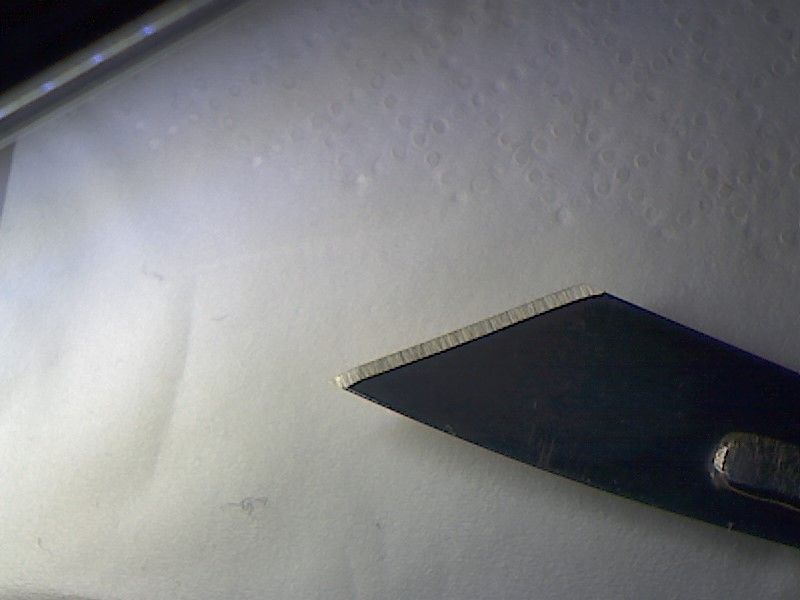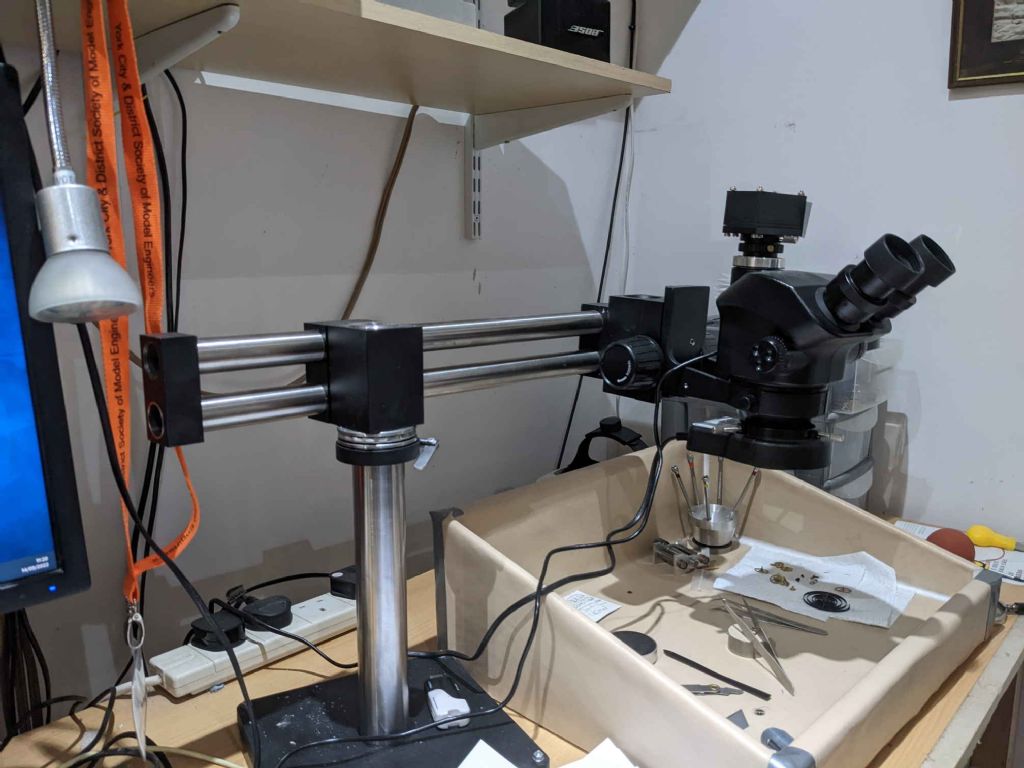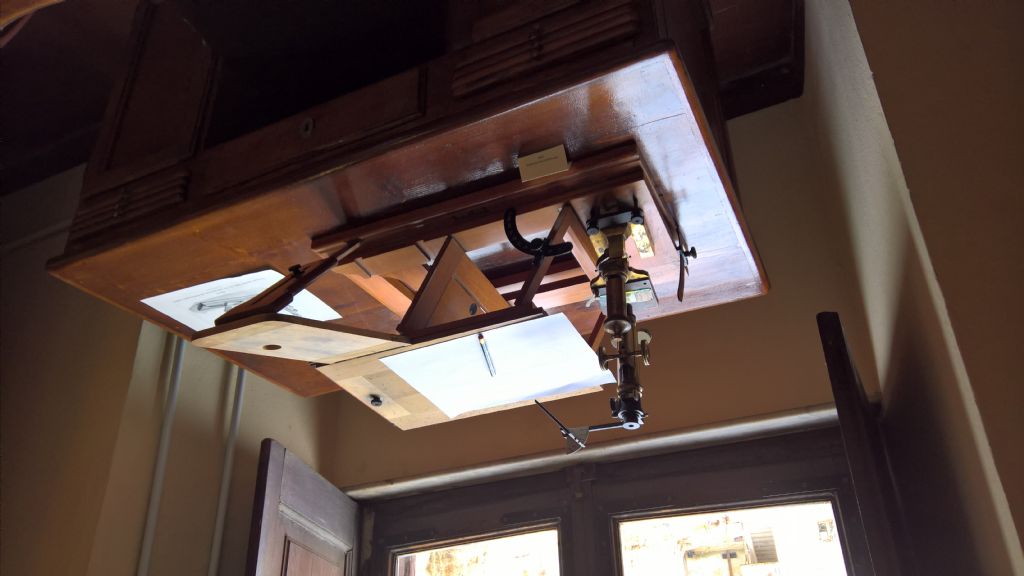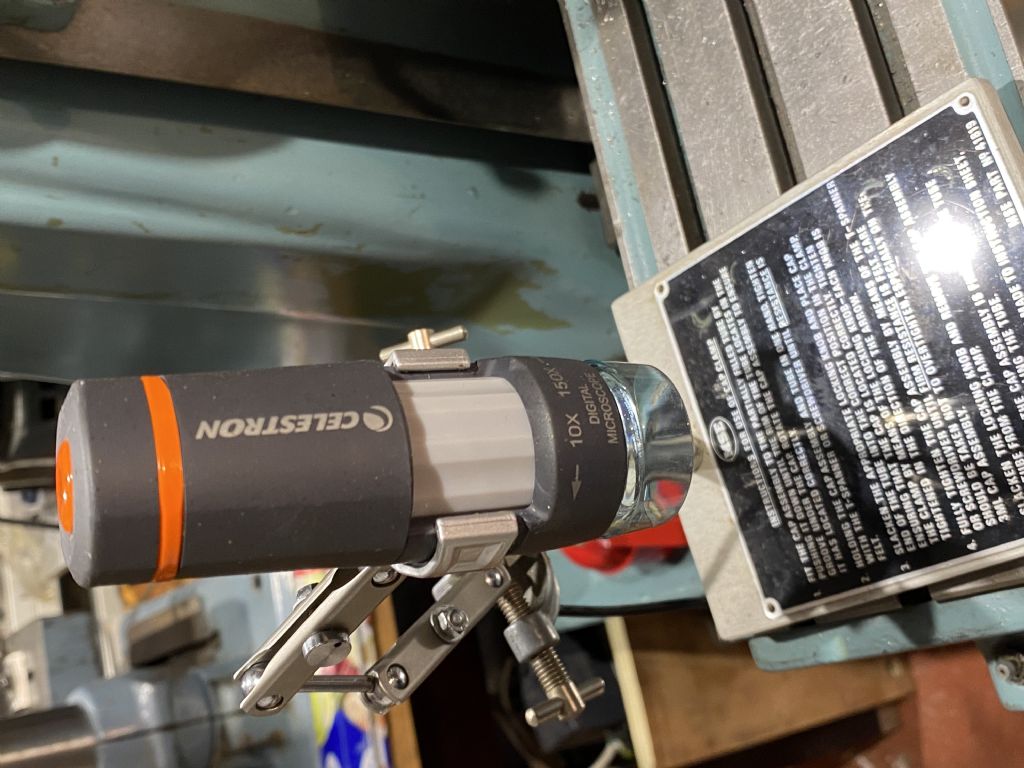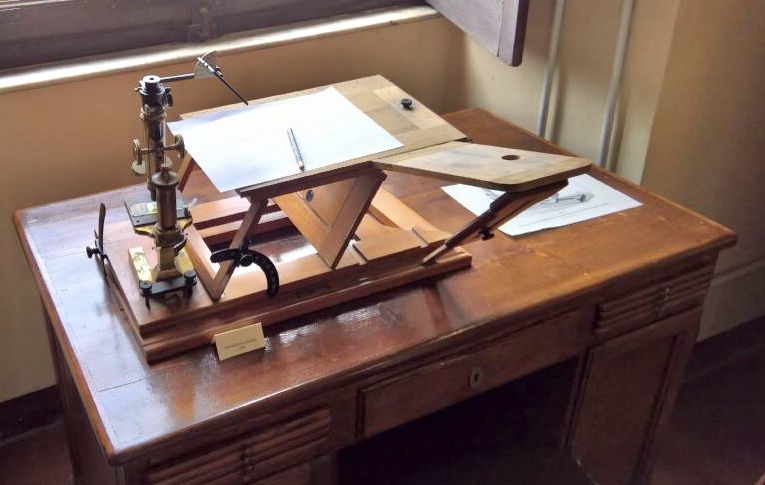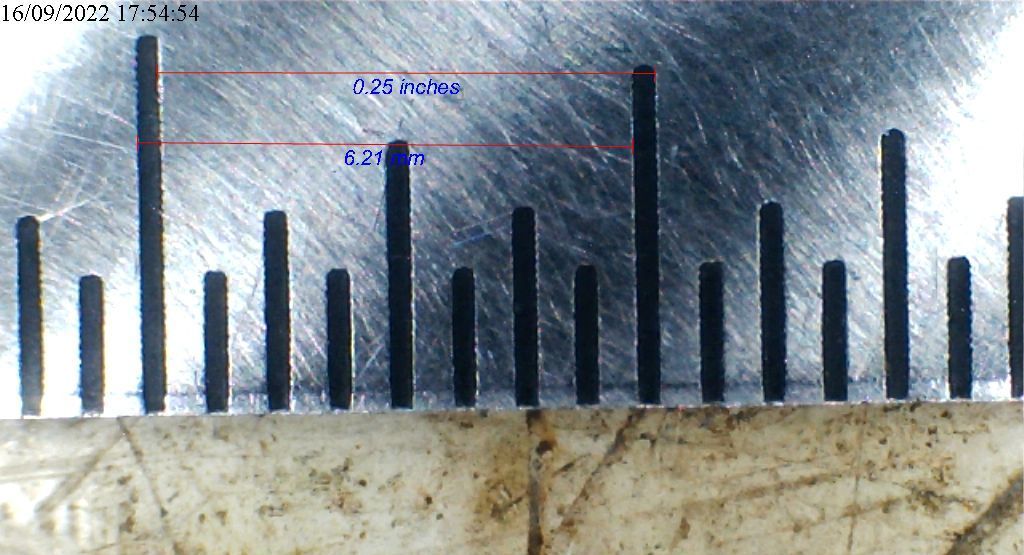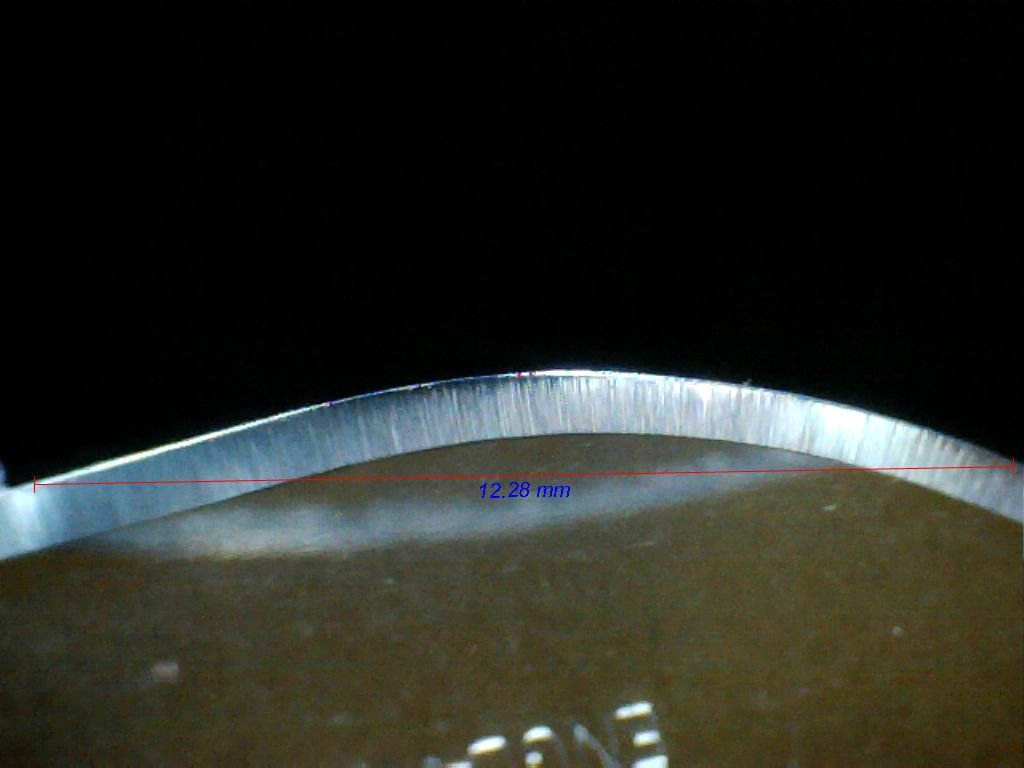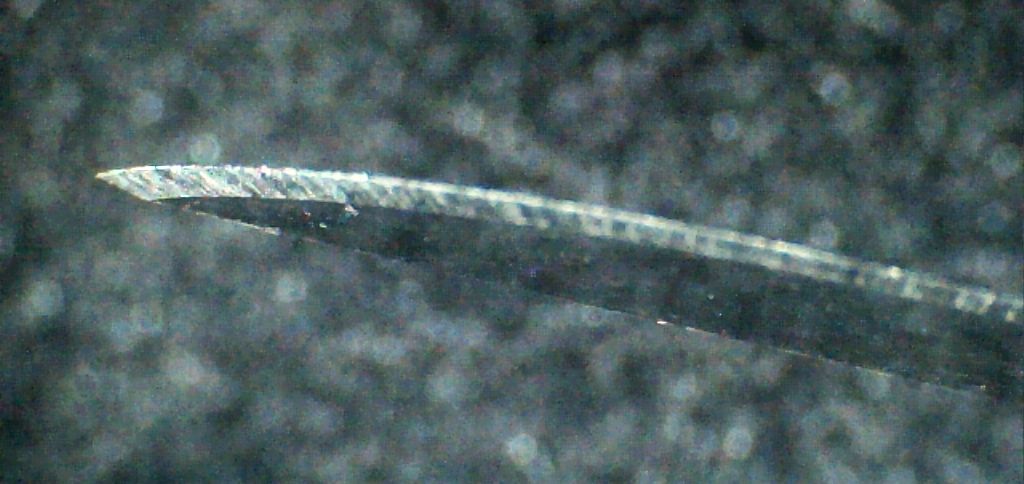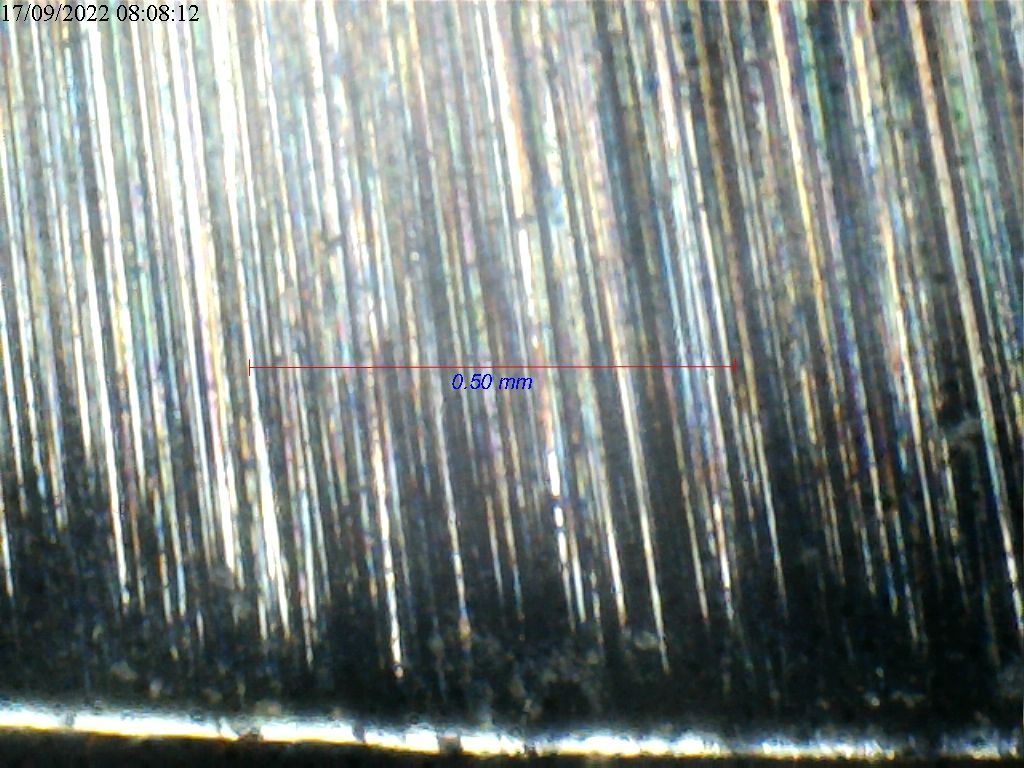Hi, this may be of interest. I have two cheap USB digital microscopes, one which was cheaper than the other, but the better one is a Maplin Gadget one. It does take decent photos, but results are varied depending on how the light from the LED's is reflected of the item being viewed. The software includes measurements to be made, but they don't guarantee accuracy and the magnification ratio scale isn't truly correct, so I first took a photo of a "Precision Edge" X-ACTO square with inch measurements, divided into 1/32" and calculated the magnification ratio from that.

The next photo is a section of a Swan Morton No. 21 blade at about 20 x.

This one is looking at the actual edge with the point of the blade at the left, again at about 20 x, and you will notice how shallow the depth of field is, as only approximately 2mm at the tip is in focus.

The last Photo is a very close up portion part of the ground part which forms the edge, which is at the bottom of the photo, this was at the maximum of 400 x. which it claimed that the microscope could do, but was very difficult to achieve a decent result, with the edge just slightly out of focus. You may notice some grey and black small dots in various places, which are not actually on the blade, these are probably tiny specks of dirt on one of the lenses inside the microscope, which have developed over time, as I've had it a good number of years.

It's not a tool to do serious research with, but it is useful for a looking at things very close up, but because of its age, it won't work on any Windows system after Vista. Maybe I might try one of those lower priced ones that MichaelG linked to in his post above. The other one that I have is in some situations better, but the LEDs can't be dimmed, and so shine too much light at times, and that will also only work up too Vista system.
Regards Nick.
Edited By Nicholas Farr on 17/09/2022 11:30:26
 John Doe 2.
John Doe 2.

 Or area as suggested above.
Or area as suggested above.